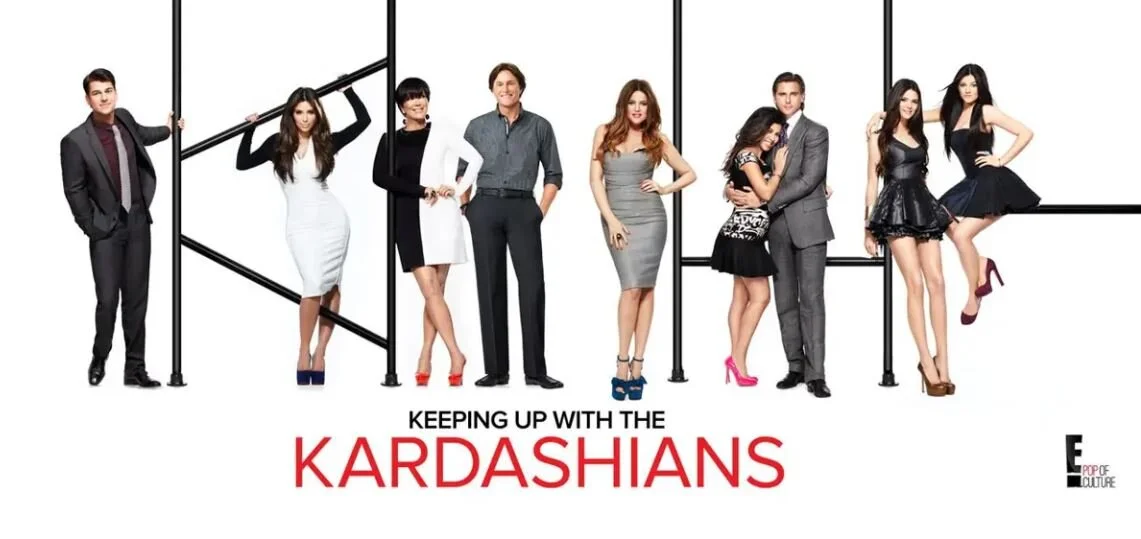Authors: Emmalee Helms, Kristy Klixbull, Varnell Moffett, and Dora Pu.
This is part 1 of a two-part series on the unscripted video industry.
As content providers in the arts and entertainment industry, it is important to understand consumer habits and customers’ desires. This will affect an organization’s strategic decisions in terms of the content provided and programming offered. Although this research pertains to the unscripted video industry, much of the insights could be useful to any arts organization that seeks to entertain audiences. Through the research and case studies presented in this study, one can better understand a potential audience and what compels them to this type of entertainment.
The Subscription Video on Demand (SVOD) platform is changing the way viewers watch home entertainment and traditional studios. It is increasingly more difficult to understand an audience’s viewing habits in the over-saturated unscripted programming industry due to the lack of viewer data collection capabilities of SVOD platforms. This report explores audience behavior and preferences when watching unscripted programs on SVOD platforms, and how that can inform strategic decisions by industry leaders.
The four case studies below demonstrate that unscripted television is successful when the content is focused on drama, is de-stressing for the viewer, and allows the viewer to experience another person's reality. The studies demonstrate unscripted television series are successful when the show has had a successful marketing and promotional campaign to drive viewers to further their viewing experience. Lastly, the studies exemplify that when unscripted content airs on multiple channels and or platforms, viewership increases, and the content gains a significant amount of younger audience members.
Case Study 1: Keeping up with The Kardashians
Keeping up with the Kardashians (Bunim/Murray Productions) is an American reality television show that follows the lives of the blended families of the Kardashians and the Jenners. The Kardashians hit America’s radar when attorney Robert Kardashian defended O.J. Simpson after being accused of murdering his ex-wife and her lover. They later made headlines again when Kim Kardashian released a sex tape that went viral. Keeping up with the Kardashians first aired in 2007 on the E! network and continues to be in production as of 2019. In the fall of 2018, E! aired the 15th season of Keeping up with the Kardashians.
Figure 1: Keeping up with the Kardashians show image. Source: Screenshot from Vimeo.
Keeping up with the Kardashians originally aired as a 30-minute documentary style format where audiences had the chance to walk in the shoes of a rich and famous family. For the first few seasons, all Kardashians and Jenners were on the show: Bruce Jenner, Kris Kardashian, Kourtney Kardashian, Kim Kardashian, Khloe Kardashian, Rob Kardashian, Kendall Jenner, and Kylie Jenner. The show focused on how each individual dealt with drama, heartbreak, growing up, and everyday hardships that every family faces. Audiences were alongside the family and were able to relate to what they were experiencing on the show.
No matter how much the Kardashians/Jenners and the show change, America loves to watch the drama that unfolds around them. The demographics of audience members that tune into the show every week are mainly women ages 18 to 49. The target audience is much the same, aiming for people between the ages of 18 and 49. As of a year ago, Keeping up with the Kardashians suffered a decrease in ratings and viewership. Early seasons of the show averaged more than two million viewers. Season 15 has only garnered 1,443,000 viewers and experienced lower ratings of between 0.5 and 0.7.
Even though the show has dropped in ratings and viewership, it remains unquestionably popular. It has become one of the longest running reality shows on television and has earned multiple spinoffs. A fan interviewed for this report claims to love watching all the drama unfoldand is fascinated by Kris Jenner, the family matriarch. Other fans of the show like that the Kardashians remind them of their own family and allow viewers to see even the most private of moments in their lives. Some fans also use it to de-stress after a long day at a hard job because the content is light-hearted and mind-numbing. Fans have the additional attraction of staying up to date on what the family is doing minute-by-minute via social media, allowing them to feel closer to the stars. Fans of the show do not need to worry about the ratings. Keeping up with the Kardashians has been renewed until at least 2020.
Case Study 2: Mysteries & Scandals
Mysteries & Scandals (produced by Wilshire Studios) is an American unscripted series. The show discusses infamous crimes, murders, and scandals via stakeholder interviews and real footage. Mysteries & Scandals was rebooted from the 1998 TV series originally aired on E! and is included in the crime genre.
The 2018 reboot was hosted and executive produced by Emmy Winner, Soledad O’Brien. When the first episode aired in January 5, 2018, it received a rating of .10. However, the ratings dropped to 0.06 when the last episode aired on April 6, 2018. There was little press coverage and marketing promotion when the reboot aired, as it had limited social media presence and did not garner much discussion online. On IMDb, a site where viewers can rate and review content, there were only 21 ratings; the average score reached 7.1. This rating was significantly higher than the highest rated show Keeping Up with the Kardashians. The high ratings on IMDb is a good example of how viewer perceived quality and popularity of unscripted content often do not align with each other. Nevertheless, the show fits with Oxygen’s brand image as a full-time crime programming destination with an aspect of documentary filmmaking.
Figure 2: IMBD rating for Mysteries and Scandals. Source: Screenshot of IMDB.
Other than mystery and crime content fans, Oxygen announced they were going to switch their target audience to millennial viewers in 2014, with shows intended for “young and multicultural women.” In order to engage more with the audience, Oxygen also created a website that would allow users to share in the community and watch content on demand using their own devices. This allowed the network to gather data and information from viewers who streamed their content.
Case Study 3: Live from the Red Carpet
Two of the most prominent and successful unscripted shows produced by Wilshire Studios are the E! People’s Choice Awards and E! Live from the Red Carpet. We wanted to examine two award shows where E! Live from the Red Carpet has been successful in generating ratings. The two award shows we chose to examine are The People’s Choice Awards and The Oscars.
According to MultiChannel News, E! Live from the Red Carpet at The People’s Choice Awards drew in approximately 1.5 million viewers with 560,000 adults belonging to the 18-49 demographic. These ratings were a major increase in viewership for the show and the network. The award show skewed toward the youngest demographic it has ever attracted in Nielsen history. Audience viewership was four times more concentrated with adult viewers between the ages of 18 and 34 than last year’s viewings.
It is important to note one of the main reasons this unscripted show performed so well was because of the multiple channels on which NBCUniversal aired the show. Expanding the ways to watch to the show increased the network engagement rate of social content. Airing on multiple channels also helped the show gain a significant amount of younger audience members. The network received its biggest live digital video audience with almost three million live streams. Airing shows on multiple platforms has been successful for the network and is something they should consider in the future.
Having The E! People’s Choice Awards’ on multiple channels proved to be even more beneficial when examining competing award shows. For example, iHeartRadio Music Awards had 4.0 million viewers while airing their content on TBS, TNT and TruTV. The Kids Choice Awards drew 3.7 million viewers airing on TeenNick, Nick/NAN, and Nicktoons, while The Critics' Choice Awards had only 2.9 million viewers by only airing on the CW. The Teen Choice Awards received only 2.5 million viewers on Fox. Deadline reported the 2019 E! Live from the Red Carpet at The Oscars drew similar numbers to the E! Live from the Red Carpet at The People’s Choice Awards. The red-carpet pre-show had 1.8 million viewers and 631,000 adults belonging to the 18-49 demographic. This was an increase from the last year’s pre-show. Unscripted content on award shows has proved successful for NBCUniversal, most notably for the Oscars, with a 53% increase in engagement from 2018.
Case study 4: Swamp People
Swamp People is an unscripted television show in the United States that first aired on the History Channel on August 22, 2010. Since its original air date, Swamp People has successfully released ten seasons of content, totaling 166 episodes. Each new season follows various alligator hunting teams through the swamps of Atchafalaya Basin, Louisiana. Since 2010, the History Channel has ordered two new spinoff series, Outback Hunters and Swamp Mysteries With Troy Landry. There have been two mobile games using the namesake of the show, Angry Swamp and The Swamp People Game. Swamp People has aired from August 2010 until present.
The first episode of the series broke records for the History channel. The debut was able to capture “4.2 million total viewers with 2.5 million of them among 25-54-year-olds and 2.3 million among 18-49-year-olds,” which is exponentially higher than any series debut for the History channel. Swamp People’s most successful season, according to ratings, was the second season, which aired in 2011. The finale had “5.5 million total viewers, 2.8 million Adults 25-54 and Adults 18-49 – scoring the #1 show on cable for the night and the #2 spot in all of television (behind only Big Brother) with Adults 25-54 and Adults 18-49.”
Figure 3: Image from the show Swamp People. Source: Alfonso Bresciani/History Channel.
Because the show had a remarkable first season, the second season created a lot of interest within key demographic groups. The second season was a great success for the History Channel, as it not only set ratings records, but it monetized the show further through merchandise. It was an unanticipated success that became an overnight hit. The show continues to be successful for the channel, but the initial appeal has worn off after ten seasons. In the past two years, Swamp People has attained an average of between 1.6 to 2 million viewers per episode, but seems to be trending downward year over year.
Conclusion
These four case studies illustrate new trends in the unscripted television industry. Consumer preferences are changing, and many are desiring to watch unscripted shows via Subscription Video on Demand (SVOD) platforms. Audiences are leaning more toward shows that have a lot of dramatic flair and offer large spectacles; a further example of this is the new show The Masked Singer. These types of shows offer viewers an exciting experience they can enjoy from the comfort of their own homes.
Part 2 of this series highlights survey results and interviews from key industry leaders to further understand the unscripted television industry, followed by a list of recommendations.
About the Authors
This analysis was part of a capstone project by CMU Master of Entertainment Management Students: Emmalee Helms, Kristy Klixbull, Varnell Moffett, and Dora Pu.




